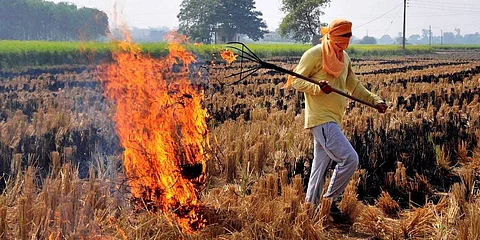

NEW DELHI: Haryana recorded around 45 per cent decline in incidents of stubble burning and the problem will be resolved completely in the next two years, state pollution control board member secretary S Narayanan said on Thursday.
Addressing an event on clean air here, he said the state achieved these results "purely through enforcement" and no major policy changes were made.
Stubble burning in Haryana and Punjab in October-November is considered one of the major reasons behind the annual episodes of smog in Delhi-NCR.
"Comparatively, we have done a good job this year. We have reduced paddy straw burning by around 40-45 percent, so far.
"It was purely through enforcement. We have not made any changes policy-wise. We studied the behavioural pattern of farmers in certain villages who would burn stubble time and again. This time, we specifically concentrated on those villages," he said.
He said only 10 per cent of around 7,000 villages in Haryana are burning stubble.
Haryana produces around 7 million tonnes of paddy straw every year.
Almost the whole of paddy straw, except that of Basmati rice, is burnt to make the field ready for sowing of wheat or potato.
Experts say farmers resort to burning the crop residue because other solutions are not economically viable.
Stubble burning is considered a major reason behind the annual smog episodes in Delhi-NCR.
This year, the contribution of farm fires to pollution in the region peaked to 44 per cent on November 1, triggering a public health emergency.
The Haryana Pollution Control Board member secretary said the air pollution issue won't resolve without a political will and proper implementation of anti-pollution measures.
"Departments such as transport and agriculture should also have a proper policy," he said.
Narayanan also said that there's nothing "green" about green crackers and that "fireworks should be banned completely (on Diwali). There's no other way out."
With Delhi's air quality plummeting to dangerous levels around Diwali every year, the Supreme Court had in 2018 banned polluting firecrackers and ordered that only green firecrackers, which is said to cause 30 per cent less pollution, can be manufactured and sold and enforced a two-hour limit for setting them off.
However, a large number of revelers brazenly flouted the Supreme Court-enforced two-hour limit for bursting crackers this year too.
Green pyrotechnics also failed to draw good responses both from sellers and buyers, primarily due to lack of variety, limited stock, and high prices.